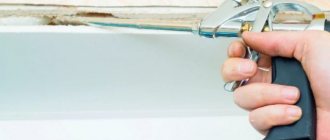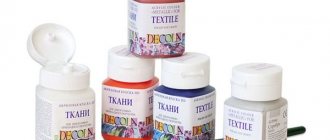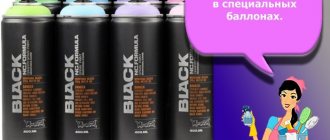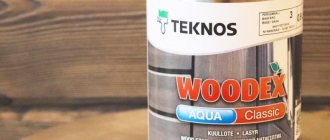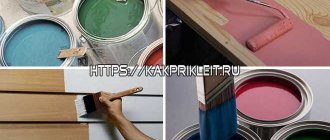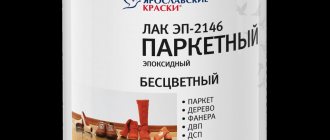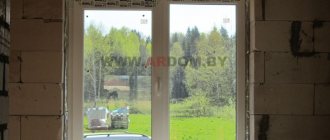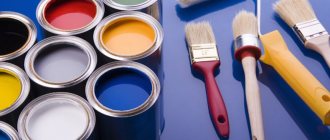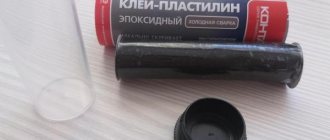As you already know, after much experimentation, study and research, I settled on Vitrail stained glass paints from Pebeo . With them, my works and paintings turn out exactly as I see them before starting work; these same paints turned out to be the most convenient for me!
However, there are many other professional stained glass varnish paints that other craftsmen use. In some ways they are superior to Vitrail, in others they are inferior to them, and for many professionals, combinations of the properties of other paints turn out to be more suitable and convenient than for me.
Some people love Idea Vetro stained glass paints for their high drying speed , others prefer Lefranc&Burgeois for their stunningly rich colors, while others primarily look at the price and prefer affordable paints.
I have prepared for you a short review of stained glass paints that I have worked with myself, or that I know about working with from craftsmen I trust. I hope this review will help you navigate the properties of the most famous paints and immediately get to work with those that are right for you.
If you have not yet decided which paints are best to choose for a specific task, then an article about water-based and solvent-based stained glass paints (varnish)
In any case, stained glass paints based on organic resins and solvents are similar in characteristics, inferior to each other only in many ways.
So let's start with my favorites...
Stained glass paints Vitrail, Pebeo
No matter how much I work with them, I can’t stop admiring their ability to spread and form a perfectly smooth surface. At the same time, errors during application are easily corrected with a cotton swab and are completely invisible in the finished work or painting.
A pipette is an excellent tool for filling large, even surfaces.
They do not leave traces of the use of a brush, pongee or pipette.
, so you can work with them with any tool. To fill large surfaces, I use a pipette - a miracle tool, and then I use a brush. Let me tell you, this turns out to be a super convenient item!
Of course, Pebeo produces thinners, brighteners, contours and
everything you need to work with these paints. That is, the artist always has the opportunity to translate all his images into a painting on glass using only Pebeo products.
By the way, this paint fits perfectly even on canvas!
It shines and shimmers in those places where stained glass paint was applied. Examples of works with stained glass paints on glass and fabric surfaces can be viewed in the Gallery .
Fragment of a video lesson on painting a glass table and gilding with gold leaf
On sale there are 26 transparent paints and 10 opaque paints, 7 relief contours with thin noses, various mediums, solvents and craquelures... and that's not all!
In French stores you can find lead tape in a roll of several meters to imitate real stained glass!
In general, I can warn you: once you buy Pebeo stained glass paints and work with them, you will understand that you will not want to work with anything else. Just keep in mind that the name “Pebeo” is not used anywhere, you only need to look for the spelling in Latin.
Painting with paints
Those who like to decorate their home with their own hands should take a closer look at stained glass paints. This concept includes artistic paints and varnishes intended for painting smooth surfaces.
Stained glass paints can be used to enliven glass, mirrors, plates, and also make a unique piece of furniture from an ordinary glass or vase.
The scope for imagination here is enormous. You can please yourself with this decoration or give a gift to a loved one.
You can use stained glass paints to paint directly on the object being decorated. But another method is no less popular. The drawing is created on ordinary film - even an office document file will do. And then the pattern is transferred to the desired surface.
Lefranc&Bourgeois (sometimes called LF for short)
According to many craftsmen, stained glass paints from Lefranc&Bourgeois are the highest quality. They have stunning colours, excellent mixing ability to create stunning shades, adhere very well and are extremely durable.
They prevent the appearance of bubbles. The contour tubes have a very thin spout, which allows you to work out very fine details. On the manufacturer's website they write that there are 22 colors and 8 contours on sale.
Lefranc&Bourgeois stained glass lacquer paints
At the same time, Lefrancs are expensive. Perhaps buying them in Russia, for example, in St. Petersburg, will cost even more than at my home, in Cannes. Since I don’t see any obvious advantages of these stained glass paints over Pebeo, I don’t use them as the main ones.
And what’s interesting is that this manufacturer has stained glass paints with the same name as my favorite ones - Vitrail. The characteristics of stained glass paints are very similar, the country of origin of both brands is France.
By the way, Vitrail is translated from French as “Stained Glass” and the word speaks for itself - ideal for simulating bright stained glass windows, as well as stained glass paintings and painting on interior furniture!
You can choose a master class on stained glass painting and more to suit your taste
Domestic producers of acrylic paints
Among Russian manufacturers, paints for ceramics and glass can be noted: Olki, Gamma and Decola. All of them do not require firing and are not very resistant to abrasion. Products from the Olki series can rarely be found on sale; the paints themselves are practically no different from universal acrylic ones. Gamma coatings have a too liquid consistency and are inconvenient to work with, and the color palette is meager, dull and inexpressive.
Perhaps, among domestic products, the choice of Decola paint for glass and ceramics will be optimal in terms of price and quality ratio. The Neva palette creates coatings of bright and rich colors. Paints for ceramics are waterproof and are subject only to external mechanical influences, which means they are suitable for decorative purposes. The line includes ready-made sets and stained glass coverings. Decola paints for ceramics and glass are presented in two versions: matte and metallic, the same applies to the manufacturer’s contours.
Idea Vetro by Maimeri
Maymeri is another flagship of the market, one of the most popular Italian paints. They are liquid, like Pebeo, take a little longer to dry (about 40-50 minutes before touching with a finger), but overall they are very easy to use and show outstanding performance once dry.
Their color range is a little narrower than that of Lefranc and Pebeo, but for most tasks it is quite sufficient. The palette consists of 13 color shades and 12 metallic colors.
Idea Vetro stained glass varnish paints from Maimeri
Marabu Glass Art
Very interesting German paints, but also difficult to choose. They have an amazing range of colors; the company produces both organic-based and water-soluble paints.
Some artists use only their outlines because their tips have a diameter of 0.3 mm and they can apply very fine lines and work out the smallest details.
Available in 18 shades and 5 contour colors.
What is interesting about Marabu is that in liquid form the paints are darker than indicated on the jar. They lighten slightly as they dry, acquiring the desired color. And Marabou is expensive.
At least the entire Marabu Glass Art line is produced in small containers (smaller than other paints), and when recalculated in price they turn out to be more expensive than even Lefranci.
Stained glass varnish paints Marabu Glass Art
But there is also a plus: since the jar is small and costs little, you can buy a richer palette of stained glass paints from this company for reasonable money.
Types of paint for glass and ceramic products
Coverage may vary. Some paints are applied to a “raw” unfired product and then subjected to heat treatment; this type includes cobalt paint. When applied to a product, it has a gray color, but after the oven it acquires the famous blue tints of Gzhel.
However, there are many more non-fired ceramic paints on the market. They are applied to the finished product and allowed to dry. This group includes acrylic paints for glass and ceramics. They have a rich palette, different packaging and it is very convenient to work with such a coating.
Craft stores offer a huge selection of both ceramic paints themselves and manufacturers. You can purchase ready-made sets of 6-10 bottles of different colors, or you can choose the colors you need yourself.
The purpose and type of the finished product is of great importance. A craftsman who makes items for sale will give preference to quality; parents who decide to work with their children are more likely to choose a ready-made inexpensive set for creativity. To create stained glass you will need special translucent water-based paints and a so-called outline. It is better to purchase the latter not a universal one, but a special one for working with glass and ceramics. Some paints cannot be applied to items used for serving food, others are completely unstable to water and detergents. You should carefully study the instructions before purchasing paint or consult with store salespeople.
Attention! Inexpensive acrylic paints without firing are washed off with water, but expensive ones can be easily scratched with a knife or fork. Therefore, for painting everyday dishes, it is better to use coatings that require heat treatment.
Vetro Color by Ferrario
Vetro Color, judging by the reviews, is a very good varnish paint with 24 basic transparent colors, 4 top colors and a colorless thinner.
They have an ultraviolet filter, due to which they are reliably protected from fading. Manufacturer Italy
Stained glass varnish paints Vetro Color from Ferrario
S.Kreul Hobby line Glasmal Farbe
German paints with a narrow palette and low price. They say that when mixed with Lefranc & Bourgeois or Idea Vetro they give a wonderful matte stained glass surface.
I believe that it is better to avoid mixing glass paints from different companies. You also need to use only special products for dilution, lightening, and so on. A review article on the world of stained glass painting will help beginners in stained glass technique
Stained glass varnish paints S.Kreul Hobby line Glasmal Farbe
It is unknown how the paint will behave after some time. It will be a great shame if it starts to peel and fall off due to the incompatibility of the paint base.
Subtleties of application
Colorants for painting glass and ceramics are divided into paints, outlines, markers and melting granules. In addition, paints for glass and ceramics are divided into two types depending on the purpose of painting.
Paintwork materials can be applied without firing or with firing. The beauty of the painting depends on which of these methods is used.
Professional artists use complex dyes when painting ceramics, which may belong to glaze or enamel. Painting of ceramic dishes such as teapots, cups, plates can be done both in production and at home. Kits for painting dishes on their own are sold with a ready-made object, which even children can draw on.
Stained glass from Gamma
These stained glass paints are made in Russia and I have never had to work with them before. Therefore, I will describe the general opinions of masters in stained glass painting. They are loved only by those who save money, since they are really inexpensive.
No other advantages have been noticed: it is believed that lovers of stained glass painting who start with Gamma are most often disappointed in stained glass painting in general because of them. The palette consists of 10 colors
Stained glass varnish paints Gamma
Indeed, when applied, paints bubble, dry unevenly, and the resulting surface quickly discolors and cracks. To be honest, I heard this from other artists, but I haven’t used these paints myself and I can’t confirm these shortcomings.
But I’m sure that Gamma is not a competitor to my paints in any case.
This review included the most popular organic-based stained glass paints used by Russian-speaking craftsmen. In general, there are other manufacturers in the world who are difficult to find in art stores in the vast expanses of the former Soviet Union.
As I wrote earlier, I use stained glass varnish paints not only for glass painting, but also for mixed media paintings on canvas. There are also paintings entirely painted on canvas with stained glass paints.
What is mixed media and why is it so good? Read this informative article.
Examples of paintings using stained glass paints
You probably thought, “Why complicate everything so much... stained glass paints for glass, oil paints for canvases.” In the classic version, yes, but in practice it is possible to use different colors and materials in one work and get surprisingly interesting paintings with bizarre plots.
Creativity is multifaceted and has no boundaries! The main thing is to know what you can mix with what and what you absolutely cannot... Everything else is a matter of your creative imagination!
What stained glass paints do you use to create your works? You can also try your hand at mixed media, using stained glass paints on an acrylic, relief background.
my Video lesson will help you , which can be ordered today on special. price -70%! MK will be especially interesting for those who want to broaden their horizons in creativity and try a new direction in art. Try and create your own masterpieces!
Video to note: How creative paintings are created - Ideas for creativity
Friends, so that the article does not get lost among many other articles on the Internet, save it in your bookmarks. This way you can return to reading at any time.
Ask your questions below in the comments, I usually answer all questions quickly
Contours for glass and ceramics
This type of material can be used independently and in combination with other paints.
The contour is indispensable for working on glass and creating stained glass windows. They can also be purchased as part of a set or individually. The substances contained in the contours adhere the pigment well to the smooth surface. The stroke outlines the boundaries of the drawing and does not allow the paint to spread over the surface. The most beautiful and unusual works are obtained by combining colors and contours in creativity.
The coating is very easy to use. First you need to come up with a design and select a suitable item. Then take a tube of contour and carefully transfer the drawing, trying not to touch the lines with your hand or fingers. It only takes a little practice in pressing force to obtain the line of the desired thickness.
